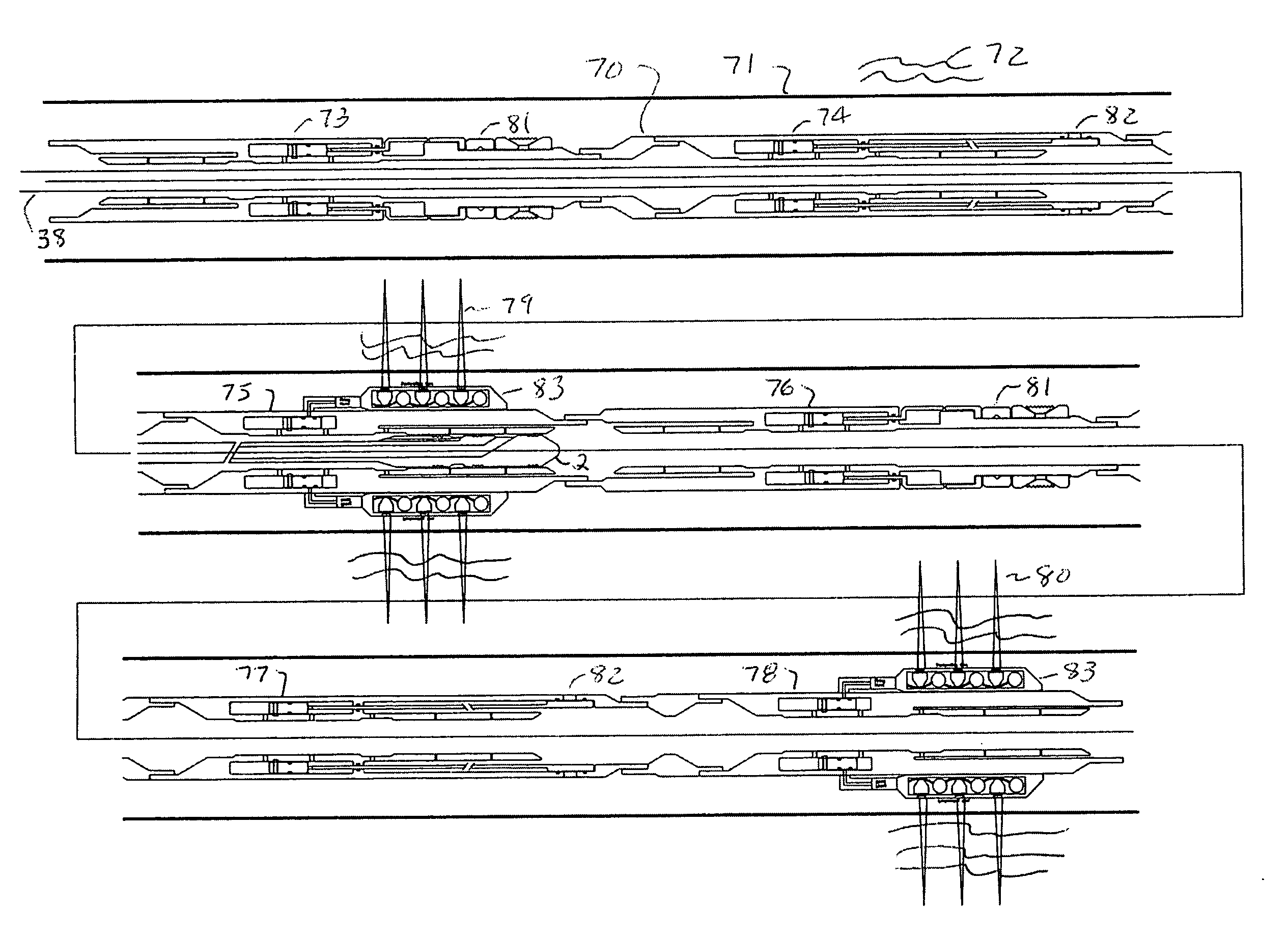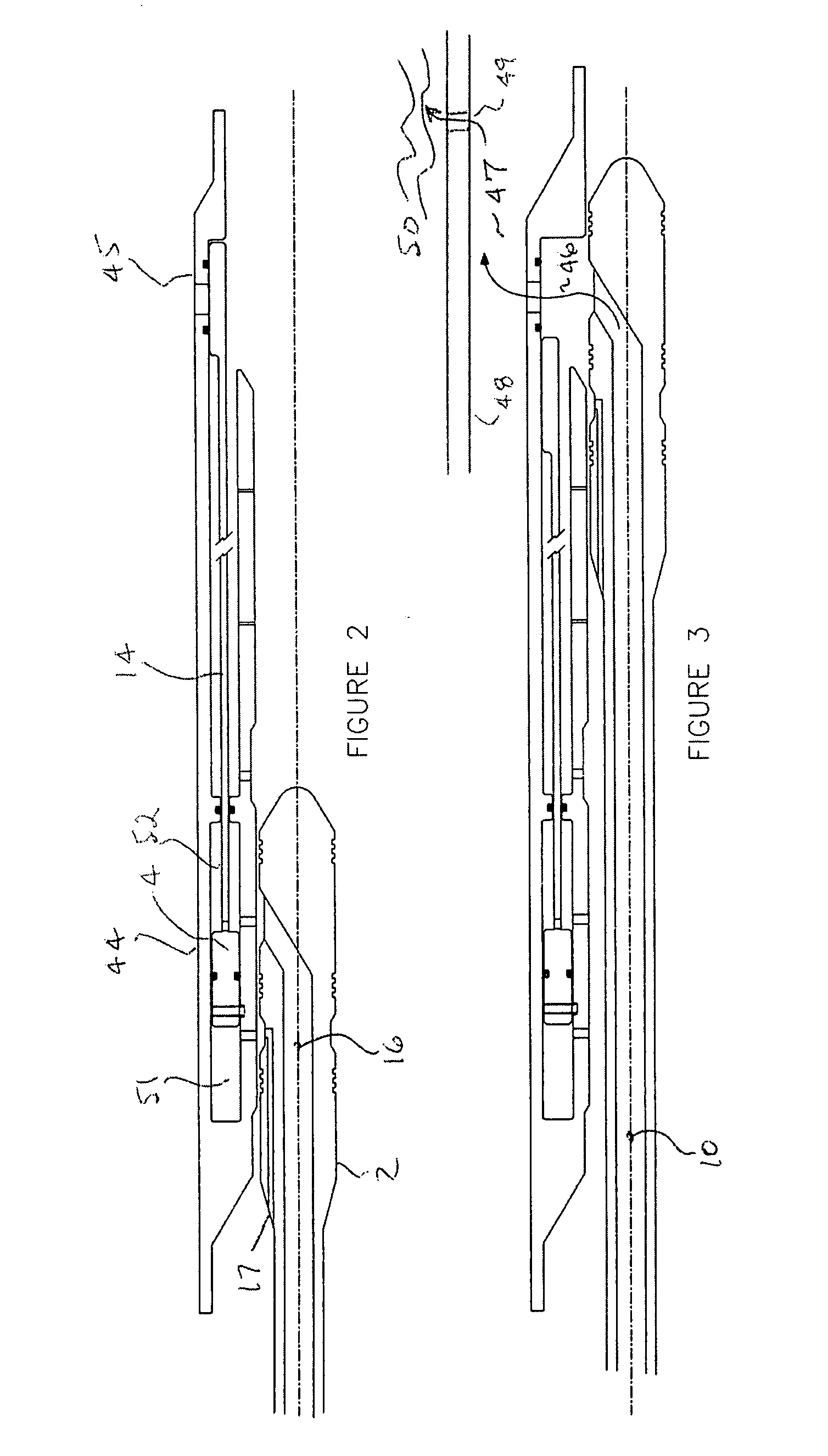Fluid logic tool for a subterranean well
a technology for logic tools and subterranean wells, which is applied in the direction of fluid removal, borehole/well accessories, construction, etc., can solve the problems of ball seats obstructing access to tools, control lines are always subject to some type of failure, and process can be very expensiv
- Summary
- Abstract
- Description
- Claims
- Application Information
AI Technical Summary
Benefits of technology
Problems solved by technology
Method used
Image
Examples
Embodiment Construction
[0059]FIG. 1 consists of a “Completion Fluid Logic Tool” (CLT, also referred to as the outer tool) 1 with a “Service Fluid Logic Tool” (SLT, also referred to as the inner tool) 2 positioned in the inside bore 3 of the CLT 1. The SLT 2 and CLT 1 may take on several forms as described later in the description. A Piston 4 is located between an inner housing 5 and outer housing 6 with ports 7 and 8 and 9 adjacent to the piston 4. Based on the type or form of the CLT, different porting arrangements may be used.
[0060]The objective of the porting arrangements, for example port 7 and port 8, is to allow tubing (internal) pressure 10 to act on each side of the piston 4, on both sides of seals 11 and 12, in order to keep the piston 4 in a pressure balanced, or near pressure balanced, condition so that any increase in tubing pressure 10, for any reason, does not cause the piston 4 to move. If the piston 4 does not move, the CLT 1 remains in a dormant state and does not function. The piston 4 m...
PUM
 Login to View More
Login to View More Abstract
Description
Claims
Application Information
 Login to View More
Login to View More - R&D
- Intellectual Property
- Life Sciences
- Materials
- Tech Scout
- Unparalleled Data Quality
- Higher Quality Content
- 60% Fewer Hallucinations
Browse by: Latest US Patents, China's latest patents, Technical Efficacy Thesaurus, Application Domain, Technology Topic, Popular Technical Reports.
© 2025 PatSnap. All rights reserved.Legal|Privacy policy|Modern Slavery Act Transparency Statement|Sitemap|About US| Contact US: help@patsnap.com



